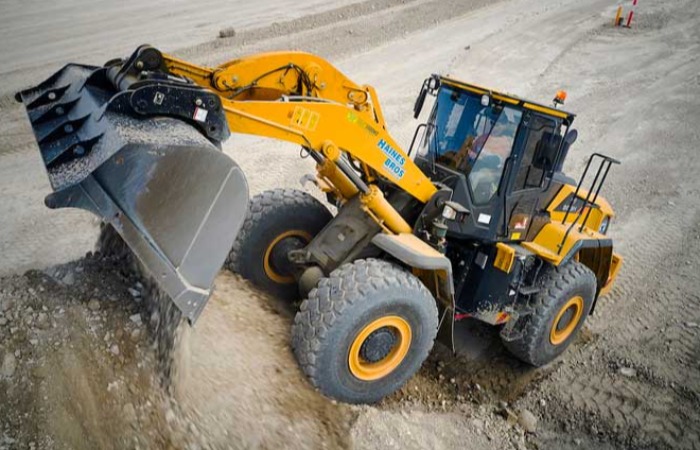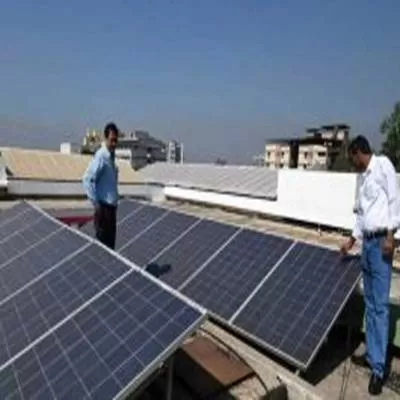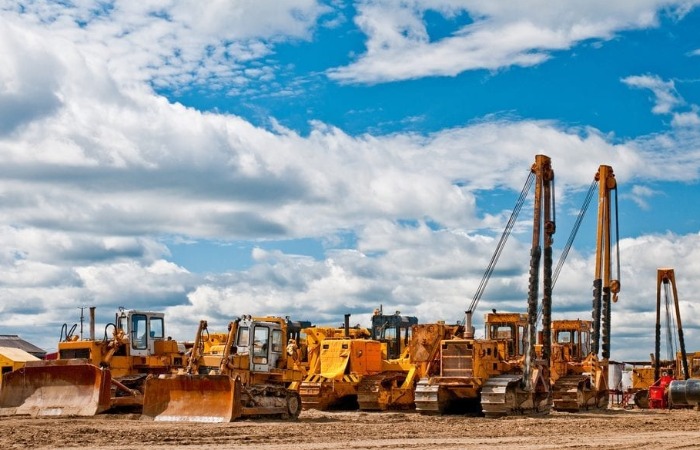Schedule a Call Back
Electrification Sparks Growth
 India is undergoing an infrastructure revolution, and at the centre of this transformation is a growing commitment to sustainability. Amidst expressways, smart cities, and mega ports, a quieter, more energy-efficient machine is starting to dominate job sites: the electric wheel loader.
India is undergoing an infrastructure revolution, and at the centre of this transformation is a growing commitment to sustainability. Amidst expressways, smart cities, and mega ports, a quieter, more energy-efficient machine is starting to dominate job sites: the electric wheel loader.Traditionally reliant on diesel, the construction equipment industry is beginning to embrace electrification. Among all the categories of off-highway equipment, electric wheel loaders have emerged as one of the most promising segments in 2023 and 2024. Though electric cars and buses have captured the public imagination, the rise of electric construction machinery—particularly wheel loaders—signals a shift that could redefine project execution across India.
According to global forecasts, 4,535 full-electric battery electric wheel loaders were registered in 2023, with a jump to over 12,000 expected in 2024. The Asia-Pacific region, led by China, is taking the lead in manufacturing, but India is fast catching up. Industry experts estimate the global electric wheel loader market will surpass 40,000 units by 2030, with India poised to emerge as one of the largest growth drivers.
“As of 2024, the Indian wheel loader market is valued at approximately $1.1 billion,” says Nischal Mehrotra, Sr.Vice President – Sales and Marketing, LiuGong India. “This growth is driven by strong demand across construction, mining, and industrial sectors. Electrification is the next logical step, particularly given the environmental and economic benefits.”
These benefits include zero fuel consumption, reduced emissions, lower noise, and reduced operating costs. LiuGong, a market leader in India, has commercially launched its electric wheel loader model 856HE MAX. With a 423 kWh lithium iron phosphate battery, it delivers up to 11.7 hours of operation in light-duty conditions and supports fast charging within 1.7 hours. This model features a fully electric drivetrain, energy recovery systems, and intelligent battery management—enabling a smoother, greener operation.
Environmental advantages
Electric wheel loaders bring a host of environmental and economic benefits to the construction industry. The transition from traditional diesel-powered machines to electric equipment significantly reduces greenhouse gas emissions. This is especially crucial as India works towards its ambitious net-zero emission goals, set for 2070.
Moreover, electric wheel loaders contribute to lowering the carbon footprint of construction projects. These machines operate more efficiently, without the need for costly and polluting fuel, making them an attractive option for project owners looking to reduce their long-term operating expenses.
One of the key advantages of electric wheel loaders is their ability to reduce noise pollution. In bustling urban environments, construction noise is a significant issue, especially in areas near residential zones. The quieter operation of electric loaders helps address this problem, making them ideal for city construction projects, particularly in densely populated areas.
Adoption of electric machines
The enthusiasm for electric machines is not limited to LiuGong. SDLG, a Volvo Group company, has made headlines by inaugurating a new manufacturing facility in Peenya, Bengaluru, which now produces electric wheel loaders locally. Their battery-electric model, the L956HEV, introduced at Bauma Conexpo 2023, has started working in various industries across India under an equipment-as-a-service model. According to Surat Mehta, Head of SDLG Business in India, “We’re seeing strong interest in electric loaders from ports, batching plants, and industrial units. The shift to electric aligns with our long-term vision to offer sustainable, low-emission solutions.”
This growing shift towards electrification is not just a short-term trend. As the demand for electric machinery continues to rise, OEMs are investing heavily in research and development. From the development of better batteries to the creation of smarter digital solutions for machine monitoring and maintenance, the industry is poised for an electric transformation.
The growth of electric wheel loaders in India is underpinned by broader infrastructure programmes like Bharatmala, Sagarmala, and the National Infrastructure Pipeline. These initiatives, which focus on upgrading the country’s roadways, ports, and overall infrastructure, require high-capacity, high-productivity machines—and electric loaders are proving they can deliver.
Recently, in line with “Harit Sagar” Green Port Guidelines, Deendayal Port Authority (DPA) has taken another significant step towards sustainable port operations by supporting the deployment of four SDLG L956HEV electric wheel loaders by Swayam Shipping Services. DPA has actively facilitated the integration of green technologies, extending full collaboration for the installation of an electric vehicle charging station inside the dock area. This will ensure the seamless operation of these electric loaders and encourage further adoption of clean energy solutions in port activities.
“Infrastructure is the backbone of India’s growth, and the demand for efficient, sustainable material-handling equipment is rising rapidly,” says Amit Bansal, Director – Sales & Marketing, Building Construction Products (BCP) Division, Caterpillar India. “While electric wheel loaders are still new to India, customer interest is increasing, particularly in sectors like mining where emission control is crucial.”
Caterpillar India’s Hindustan 2021E remains the best-selling loader in the country, albeit diesel-powered. It’s equipped with advanced telematics and ergonomic features, but the company is actively investing in electrification technologies. “We are committed to technology-enabled solutions that increase customer loyalty and reduce operational costs,” says Bansal.
As these infrastructure projects expand, the need for modern, sustainable equipment like electric wheel loaders will only grow. Companies are beginning to see these machines as key enablers of their projects, offering both economic and environmental benefits. This trend will likely accelerate as more projects adopt green building standards and sustainability goals.
Battery-electric wheel loaders also bring unique advantages in industrial settings such as warehousing, ports, and cement plants. These environments, where loaders operate in confined spaces with shorter duty cycles, are ideal for electric machines. Their low noise and zero emissions make them especially attractive in indoor or sensitive environments.
In warehousing, for instance, where space is often at a premium, electric wheel loaders are easier to maneuver. Their ability to charge quickly also means they can be operational for longer periods during the day, reducing downtime and increasing productivity.
Ports, which often operate under strict environmental regulations, stand to benefit significantly from the adoption of electric loaders. The zero-emission nature of these machines makes them ideal for use in port environments, helping to reduce air pollution and meet sustainability standards.
JCB India also entered the electric wheel loader space with its 403E model. It boasts a 20kWh lithium-ion battery pack and delivers productivity comparable to its diesel-powered counterpart. It supports multiple charging options, including off-board rapid charging that can fully power the machine in just two hours. This loader was engineered to support a full working day or up to five hours of continuous mixed-duty use—ideal for urban job sites.
Even BEML has jumped into the game, leveraging its R&D to develop CEV Stage IV compliant wheel loaders like BL200-1, BL30-1, and BL40, while working on electric variants that align with national emission goals.
Challenges and Solutions
The adoption curve, however, is not without challenges. Charging infrastructure is still developing, and the high upfront cost of electric machines can deter small and mid-sized contractors. There is also a learning curve related to maintenance, operations, and optimal usage. Yet, OEMs are addressing these issues through innovative business models like pay-per-use, improved telematics, and training programs.
“Electrification is not just about installing a battery in place of an engine,” says Dimitrov Krishnan, Managing Director, Volvo Construction Equipment India. “It’s about reimagining the entire ecosystem—from charging and service to operator comfort and digital monitoring. We believe the players taking bold steps now will lead the market by 2030.”
The path ahead
Indeed, India’s electric wheel loader market is now at an inflection point. What was once considered a niche product is gaining mainstream traction. LiuGong’s 856HE MAX, SDLG’s L956HEV, and future models from Caterpillar and Volvo represent a powerful shift in the mindset of India’s construction ecosystem.
The numbers reinforce this optimism. Global revenues for electrified wheel loader powertrain components are expected to reach $450 million in 2024. Batteries alone account for $140 million, with motors, inverters, and onboard chargers forming the rest. As electrification gains momentum in India, this market will only expand—creating opportunities not just for OEMs but also for battery suppliers, infrastructure providers, and digital solution developers.
For India, the road to net-zero emissions must include heavy machinery. And with electric wheel loaders making inroads into mines, cities, plants, and ports, that road is already being paved—quietly, cleanly, and powerfully.
As Krishnan puts it, “It’s not about who gets there first. It’s about who stays the longest. And electric wheel loaders are here to stay.”
The revolution has begun. And it’s electric!
Several macro factors are propelling the electric wheel loader segment in India:


Subscribe Now
Subscribe to our Newsletter & Stay updated
RECENT POSTS
Popular Tags
Folliow us
Related Stories
The export market plays a pivotal role in our growth strategy
Ajay Malik, Head – International Business, Action Construction Equipment (ACE), speaks on the new products the company is showcasing at Ba...
India has been an essential market for many years
Nicole Schmitt, Exhibition Director, bauma 2025, provides insights into the expected number of exhibitors and visitors at bauma 2025.
Indian Mining and CE Industry Faces Modest Growth
ICRA's latest report reveals that the Indian Mining and Construction Equipment (MCE) industry experienced muted volume growth of 3 per cent YoY i...











